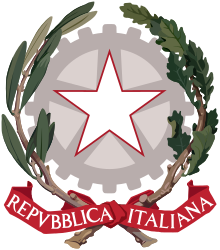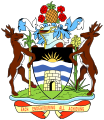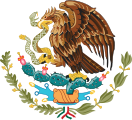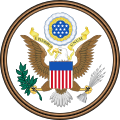Potency and safety analysis of hemp-derived delta-9 products: The hemp vs. cannabis demarcation problem
Contents

A national emblem is an emblem or seal that is reserved for use by a nation state or multi-national state as a symbol of that nation. Many nations have a seal or emblem in addition to a national flag.
Other national symbols, such as national birds, trees, flowers, etc., are listed at lists of national symbols.
Terms: emblem, coats of arms, seal
The design of an emblem is different to that of a coat of arms which should follow the rules of heraldry and so contain a shield (escutcheon) in the center. However, many unheraldic national emblems are colloquially called national coats of arms anyway, because they are used for the same purposes as national coats of arms.[1]
Some designs of national emblems can be used one-to-one for a national seal.[2]
The same for some national coats of arms like the Great Seal of the United States which is actually a coat of arms (achievement) on a seal.
-
The Emblem of Haiti looks like a coat of arms but has no shield.
-
The Emblem of Mexico is officially called the "Coat of arms of Mexico" even though there is no heraldic shield.
-
The National Emblem of Indonesia as it is called, even though it qualifies to be called a coat of arms (there are escutcheon, motto, and supporter).
-
The Emblem of Libya can be used 1:1 as a seal.
See also
- Armorial of sovereign states
- Armorial of Africa
- Armorial of North America
- Armorial of Asia
- Armorial of Europe
- Armorial of Oceania
References
- ^ von Volborth, Carl-Alexander (1983). Heraldry: Customs, Rules and Styles. Ware, Hertfordshire: Omega Books Ltd. p. 11. ISBN 0-907853-47-1.
- ^ Seal and emblem of the United States Department of the Army: not a national emblem/seal but an example for a emblem and a seal, see also: Department of the Army Emblem, U.S. Army Center of Military History























